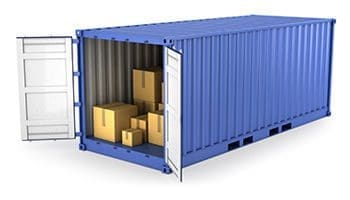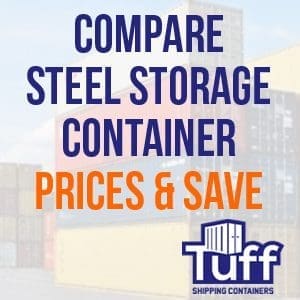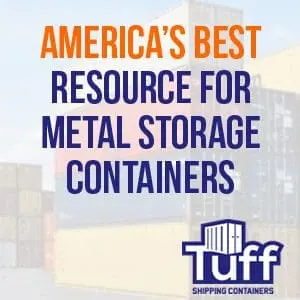
Shipshape Storage: Maximizing Space with Innovative Container Solutions
In a world where innovative ideas drive progress, one might be surprised to find that storage solutions are evolving with equal vigor. One of the most notable advancements in the realm of space management is the use of shipping containers as storage units. These large, sturdy metal boxes, which once were limited to transporting goods across oceans, are now finding their place firmly on terra firma. In this article, we dive deep into how shipping containers are transforming the landscape of storage solutions and why they might just be the answer to your space woes.
A Brief History of Shipping Containers
Shipping containers made their debut in the 1950s, with the primary purpose of revolutionizing global trade. They were built for durability, weather resistance, and security. It wasn’t long before innovators recognized that these attributes could be effectively translated to the world of storage. And thus, the concept of shipping containers as storage solutions was born.
Benefits of Using Shipping Containers for Storage
1. Durability and Longevity
Crafted from high-strength corten steel, shipping containers are designed to withstand extreme weather conditions and the perils of sea travel. This ensures that the contents inside remain safe, making it a reliable option for long-term storage.
2. Security
The containers come equipped with sturdy locking mechanisms, ensuring that your belongings are secure from theft or tampering.
3. Customizable Interiors
The insides of these containers can be customized to fit specific storage needs, be it shelving units, racks, or any other organizational structure.
4. Cost-Effective
In comparison to building a traditional storage shed or renting a space, repurposing a shipping container often proves to be a more affordable and efficient option.
5. Mobility
Should the need arise, the container can be transported to a different location with relative ease.




Environmental Implications: A Greener Choice
One of the more under-discussed advantages of using shipping containers as storage solutions is the environmental impact, or lack thereof. Repurposing containers helps reduce the metal waste that might end up in junkyards. Additionally, compared to traditional construction, setting up a shipping container for storage requires significantly fewer materials and energy.
The Versatility of Shipping Container Storage
The adaptability of these containers knows no bounds. They are being employed for various purposes, from portable offices to pop-up shops, and even as trendy homes. However, as storage solutions, they cater to:
- Personal use: As backyard sheds or additional garage space.
- Agricultural: For storing farming equipment, feeds, and more.
- Commercial: Warehouses, workshops, and inventory storage.
- Recreational: Storing boats, ATVs, and other recreational vehicles.
Getting Started with Your Shipping Container Storage
If you’re contemplating jumping onto the shipping container storage bandwagon, here are a few steps to guide you:
- Assess Your Needs: Determine the size and number of containers you need. They generally come in 10, 20, and 40-foot lengths.
- Site Preparation: Choose a flat and stable surface, ensuring it’s free of debris.
- Customize: Modify the container to meet your specific requirements, whether that’s adding shelves, insulation, or ventilation.
- Maintenance: Although minimal, regular checks for rust, and occasionally repainting the exterior, will keep your container in top shape.
The ingenious repurposing of shipping containers as storage solutions is a testament to human adaptability and innovation. It’s an affordable, durable, and versatile option for those looking to expand their storage capabilities. In a rapidly changing world, perhaps it’s time we thought a little more inside the box.
The Cost Factor: Shipping Containers vs. Traditional Storage
When considering storage solutions, the cost is invariably a paramount concern. And rightly so! With the growing demand for space—be it for personal, commercial, or industrial use—the expenses associated with storage have witnessed a steady rise. In such a scenario, shipping containers present a compelling, cost-effective alternative. Let’s break down the numbers.
Actual Average Costs of Shipping Containers
The price of a shipping container varies based on its size, condition, and any modifications made. As of 2023, here’s a rough estimate:
- 10-foot container: $2,000 – $3,000 (used) | $3,500 – $4,500 (new)
- 20-foot container: $2,500 – $3,500 (used) | $4,000 – $5,500 (new)
- 40-foot container: $3,500 – $5,500 (used) | $6,000 – $8,000 (new)
It’s worth noting that buying used containers can be an economical choice without sacrificing much in terms of quality, especially if they’ve been well-maintained.




Shipping Containers vs. Storage Units
When comparing the cost of a shipping container to that of renting a storage unit, the benefits become evident over time:
- One-time Investment vs. Recurring Costs: Buying a shipping container requires a one-time investment. Conversely, a storage unit entails monthly rental fees. Over several years, the cumulative cost of renting can surpass the one-time purchase price of a container.
- Ownership: With a shipping container, you own the space. This offers more flexibility in terms of customization and eliminates any concerns about rental contracts or annual rate hikes.
- Size and Space: Storage unit prices rise with size. A 40-foot shipping container offers a substantial amount of space, often more than standard storage units, and for a fraction of the cumulative cost over time.
Comparing with Other Storage Solutions
- Traditional Sheds or Garages: Building a shed or a garage entails costs for materials, labor, and often, permits. Moreover, they might not offer the same level of security and durability as a steel shipping container.
- Off-site Warehouses: For businesses, renting warehouse space can be a significant monthly expense. In contrast, a fleet of shipping containers can be set up on business premises, cutting down on rental costs and transportation time.
- Portability: If relocation is on the horizon, transporting a filled storage unit or other traditional storage solutions can be a hassle, often requiring the transfer of items to a moving truck. Shipping containers, built for transport, simplify this process.
When you factor in the cost savings over time, especially when compared to continuous rental fees, combined with the advantages of security, durability, and flexibility, shipping containers emerge as a clear winner in the storage game. For individuals and businesses alike, they offer a financial breather without compromising on quality or space. The future of storage, it seems, is in these once-seafaring metal boxes.
Environmental Benefits of Using Shipping Containers for Storage
In our ever-evolving world, the importance of sustainable and eco-friendly solutions has become paramount. When we consider storage solutions, shipping containers might not be the first option to spring to mind. Yet, their rise in popularity for various uses, especially storage, can be attributed to more than just their sturdiness and versatility. A significant advantage lies in their environmental benefits, as they exemplify the principles of recycling and upcycling.
Recycling and Waste Reduction
Every time a used shipping container finds a new purpose as a storage unit, it represents a win for the environment. Left unused, these containers could end up in landfills, taking up significant space and becoming a waste management issue. By repurposing them, we effectively recycle a large volume of metal, ensuring it doesn’t go to waste.
Furthermore, consider the resources and energy required to produce conventional storage units or sheds – the raw materials, manufacturing process, and transportation all accumulate a sizeable carbon footprint. In contrast, a repurposed shipping container has already been produced and, most likely, has already served its primary purpose in transportation. Thus, reusing it prevents the wastage of the immense energy originally expended in its production.




Upcycling for Greater Value
While recycling is about breaking down materials to reuse them, upcycling is about adding value to existing products. When a shipping container is transformed into a storage solution, it’s a classic case of upcycling. Without significant alterations, these containers can be transformed into secure, weatherproof, and durable storage spaces, thus increasing their utility without intensive processes that further consume resources.
Conservation of Resources
Traditional construction and manufacturing of storage units often involve materials like wood, which directly impact our forests. By opting for shipping container storage solutions, there’s a reduced demand for wood-based storage, indirectly contributing to forest conservation. Additionally, the longevity and durability of steel containers mean less frequent replacements, further conserving resources in the long run.
Energy Efficiency
Refurbishing and retrofitting a shipping container for storage typically consumes much less energy than constructing a new storage facility from scratch. This reduced energy consumption, in turn, leads to a decrease in greenhouse gas emissions, aligning with global efforts to combat climate change.
While the primary appeal of shipping containers might be their robustness and adaptability, their environmental benefits are equally compelling. As businesses and individuals alike strive to make eco-conscious choices, repurposed shipping containers for storage stand out as a testament to innovation meeting sustainability.
Customization and Modification: Tailoring Shipping Containers to Specific Needs
Shipping containers, with their innate durability and standard design, might seem rigid and unyielding at first glance. However, the truth is quite the opposite. These steel giants are akin to blank canvases, offering vast opportunities for customization and modification to suit an array of storage needs. Here’s a closer look at how these containers can be uniquely tailored, proving their versatility time and again.
Shelves and Organizational Structures
One of the fundamental modifications for a storage unit is the addition of shelving. Whether it’s for archived documents, tools, or inventory, installing customizable shelving systems inside a shipping container can maximize its storage potential. With a variety of materials to choose from, such as metal racks or wooden shelves, individuals can design an organizational layout that’s both efficient and aligned with the items being stored.
Ventilation Systems
For items that require consistent airflow or for storage spaces that will be accessed frequently, proper ventilation becomes essential. Adding turbine vents or louvered vents can promote circulation, reducing humidity and preventing condensation inside the container. This is particularly crucial for preventing mold growth and safeguarding sensitive items from moisture damage.




Windows and Lighting
If the shipping container is intended for activities beyond just storage, like a workshop or an office space, natural lighting can be a valuable addition. Cutting out spaces for windows and sealing them with durable glass or acrylic panels can transform the interior, making it more conducive for various tasks. Coupled with electrical modifications, such as installing LED lights or overhead fixtures, the container can be made as user-friendly as any traditional room.
Temperature Control
Certain items, especially perishables or sensitive equipment, demand specific temperature ranges for storage. For such requirements, shipping containers can be equipped with insulation panels, HVAC systems, or even refrigeration units. This ensures that the internal environment remains within desired parameters, safeguarding items from extreme weather fluctuations.
Security Features
The inherent strength of shipping containers already offers a solid level of protection against external threats. However, for enhanced security, modifications such as advanced locking mechanisms, reinforced doors, or even alarm systems can be integrated.
Aesthetic Modifications
Beyond functional changes, containers can be aesthetically modified to reflect a brand’s image or the owner’s personal taste. From external paint jobs to interior decor, the options are boundless. Wood paneling, flooring options, or even murals can turn a simple steel box into a statement piece.
The adaptability of shipping containers is one of their strongest attributes. Their modular and sturdy nature makes them ideal candidates for diverse modifications, ensuring they cater to the exact requirements of the user. Whether it’s a simple addition of shelves or a complete overhaul into a livable space, these containers stand ready to be molded into whatever vision the owner might have.
Security and Durability: The Fortified Strength of Shipping Containers
Shipping containers, originally designed for transporting goods across vast oceans and challenging terrains, come with inherent strengths that make them a formidable storage solution. Their very purpose necessitates a robust design, ensuring the safety of the items within from the external environment and potential threats. Let’s delve into the security and durability features of these steel structures and how they contribute to their growing popularity as storage solutions.




Wind and Watertight Construction
One of the primary features of shipping containers is their ability to withstand challenging weather conditions. Made of high-strength corrugated steel, they are constructed to be wind and watertight. This ensures that regardless of rainstorms, snowfall, or gale-force winds, the items inside remain dry and intact. The tight seals of their doors also prevent any water ingress, making them an excellent choice for regions with heavy rainfall or flooding issues.
Resistance to Pests
Unlike wooden sheds or traditional storage units, the all-metal construction of shipping containers offers no allure for pests like termites or rodents. The solid steel walls and tightly sealed doors ensure that insects, rodents, and other pests cannot easily penetrate the container. This is a significant advantage, especially when storing items that might be susceptible to damage from such creatures, like wooden furniture, fabrics, or important documents.
Advanced Locking Systems and Enhanced Security
While the intrinsic durability of shipping containers offers basic protection, there are many ways to ramp up their security features. Shipping containers can be equipped with lockboxes, a steel box welded onto the container doors that shield padlocks from tampering. This makes it exceptionally difficult for potential thieves to cut or interfere with the lock.
Beyond lockboxes, there’s an array of advanced locking mechanisms available in the market. These range from crossbar locks, which provide a visual deterrent and an added layer of security, to sophisticated electronic lock systems that can be monitored remotely.
Resilience to Wear and Tear
The life of a shipping container begins on the sea, facing salty air, rough waves, and harsh sun. Their endurance against such adverse conditions is a testament to their lasting power. This durability translates well when they are repurposed for storage. The sturdy steel framework, combined with rust-resistant paint coatings, ensures that they can offer many years of service with minimal maintenance.
Reinforced Flooring
Standard shipping containers typically come with marine-grade plywood flooring that is both robust and resistant to infestations. This flooring can easily bear the weight of heavy items, making it an ideal base for various storage needs.
The appeal of shipping containers as a storage solution isn’t just their adaptability, but also their inherent strength and resilience. Whether you’re storing valuable equipment, archived documents, or personal belongings, the robust nature of these containers offers peace of mind that your items are shielded from both environmental factors and potential security threats.




Legal and Zoning Considerations: Navigating the Rules of Shipping Container Storage
While shipping containers offer a myriad of benefits as a storage solution, it’s essential to be aware of the legal and zoning considerations associated with their use, especially in residential areas. Placing a large metal box on your property may not always be as straightforward as it seems. Here’s a breakdown of some key points to consider:
- Local Zoning Laws: Before placing a shipping container on your property, it’s essential to check with your local zoning office or city council. Some areas may have specific regulations regarding the size, placement, or duration of storage containers on residential lots.
- Permits: Depending on your locality, you might need a permit to have a shipping container on your property, even if it’s temporary. It’s crucial to ensure you obtain any necessary permits to avoid potential fines or the need to remove the container prematurely.
- Homeowners Association (HOA) Rules: If you live in a community governed by an HOA, they might have rules and regulations concerning the use of shipping containers. Always check with your HOA before making any decisions.
- Aesthetic Concerns: Some localities have stipulations about the visual appearance of structures on properties. This means you might be required to paint or modify the exterior of the container to align with local standards or community aesthetics.
- Safety and Accessibility: There might be regulations in place ensuring that the placement of your container doesn’t obstruct sightlines on roads or block pathways. Additionally, considerations for emergency access might influence where you can place your container.
- Duration and Use: Some areas may allow shipping containers for short-term use but have restrictions on using them as permanent structures. Be clear about how long you plan to use the container and ensure it aligns with local regulations.
- Environmental Considerations: Depending on the region, there could be environmental regulations, especially if the land has a particular designation, such as a floodplain or conservation area. You’ll need to ensure that placing a container doesn’t violate any environmental protection rules.
- Disposal and Removal: If there comes a time when you no longer need the shipping container, some localities may have specific requirements for their removal or disposal. Ensure you’re aware of these so you can plan accordingly.
While shipping containers present a robust and efficient storage solution, it’s paramount to approach their use with a thorough understanding of local rules and regulations. By doing your due diligence, you can enjoy the benefits of container storage without any unwelcome legal surprises.




Site Preparation and Installation: Laying the Groundwork for Your Shipping Container
Shipping containers, originally designed for transport on ships, railways, and trucks, have specific needs when repurposed as stationary storage units. Proper site preparation is essential not only for the container’s longevity but also for ensuring its functionality and safety. Here’s a comprehensive guide on preparing your site for a shipping container:
1. Selecting the Right Spot
Before anything else, determine where you want your container placed. Consider the following:
- Purpose: If you’re using it for storage, it should be easily accessible. If it’s an office or workshop, consider its proximity to utilities and other facilities.
- Sunlight: Remember that metal heats up, so consider the container’s exposure to direct sunlight.
- Drainage: Avoid low-lying areas where water might accumulate.
2. Leveling the Ground
Shipping containers need to be level to ensure doors open smoothly and weight is distributed evenly. Here’s what you need to know:
- Ground Options: While gravel is a popular choice due to its drainage capabilities, you can also use concrete, asphalt, or even compacted dirt.
- Tools: Depending on your chosen ground option, you might need a compactor, gravel, or a concrete mixer.
3. Choosing a Foundation
There are different foundation types suited for shipping containers:
- Concrete Piers: Ideal for uneven terrains. They elevate the container, allowing for ventilation and preventing direct contact with the ground.
- Slab-on-Grade: Suitable for flat terrains, this is a concrete foundation where the container rests directly on a slab.
- Pile Foundations: These are deep-set foundations, ideal for softer soils. They anchor the container firmly, making it resistant to strong winds and ground shifts.




4. Ensuring Proper Ventilation
If your site is in an area with high humidity, consider elevating your container slightly off the ground. This allows for airflow underneath, reducing condensation which can lead to rusting.
5. Accessibility for Delivery
Ensure the site is easily accessible for the delivery vehicle. Here are some pointers:
- Space: There should be enough space for the truck to maneuver, especially if using a tilt-bed for delivery.
- Overhead Clearance: Check for obstacles like tree branches, power lines, or structures that might obstruct the container’s placement.
- Ground Stability: The ground should support the weight of the container and the delivery vehicle.
6. Post-Delivery Adjustments
Once the container is delivered, you might need to make some post-installation adjustments:
- Alignment: If the container isn’t precisely where you want it or isn’t level, you may need to use jacks or other tools to adjust its position.
- Sealing: Ensure all gaps are sealed to prevent pests, dust, and water ingress.
While placing a shipping container might seem like a straightforward task, there are several considerations to keep in mind to ensure it serves its purpose effectively. Proper site preparation is an investment in the functionality, safety, and longevity of your container.
Tips on Buying and Renting: Making an Informed Decision on Shipping Containers
When it comes to acquiring a shipping container for storage or any other purpose, the process can seem straightforward. Yet, the distinction between a wise purchase and a regrettable one often lies in the finer details. Whether you’re buying or renting, here are some invaluable insights to guide your decision:
Understand the Grade or Rating
Shipping containers come in various grades, indicating their condition:
- New or ‘One-Trip’ Containers: As the name suggests, these have been used for a single trip and are almost brand new.
- Cargo Worthy (CW): These containers meet the criteria for overseas shipping. They’re wind and watertight, with valid CSC (Convention for Safe Containers) plates.
- Wind and Watertight (WWT): These are suitable for storage purposes, as they don’t have any holes, but might be a bit worn.
- ‘As is’: Typically the most worn-out, these containers might have some damage and are sold without any guarantee of being wind or watertight.
Check for Damage
Always inspect your container, preferably in person. Things to look for include:
- Rust: Some surface rust is normal, but deep rust can compromise the structural integrity.
- Dents: Minor dents are okay, but large ones can impact the container’s capacity and may collect water, leading to rust.
- Doors: Ensure they open smoothly and seal correctly. The locking mechanism should be functional.




Ensure Seals Are Intact
The seals around the doors are crucial for preventing leaks. Check that they’re intact and free from cracks. Replacing seals is possible, but it’s better if the container you acquire doesn’t need immediate repairs.
Consider the Size
Shipping containers typically come in two sizes: 20-foot and 40-foot. However, there are also high-cube variants that offer an extra foot of height. Determine your needs beforehand and ensure the size aligns with your storage requirements and space availability.
Understand Your Duration of Need
If your requirement is short-term, renting might be more economical. However, if you foresee a prolonged need, buying might make more financial sense in the long run. It also allows for more extensive customizations.
Inquire About Delivery Costs
Whether you’re renting or buying, delivery can be a significant part of the total cost. It’s determined by the distance from the container depot to your site. Always get a clear quote on this to avoid surprises.
Ask About Return Policy (for rentals)
If you’re renting, clarify the terms of return. Are there any charges for minor damages? How much notice is required before returning? Understanding these aspects can prevent potential disputes.
Purchasing or renting a shipping container is not just about selecting a big metal box. By paying attention to these tips and ensuring due diligence, you can acquire a container that offers great value, functionality, and longevity.
Leave a Reply